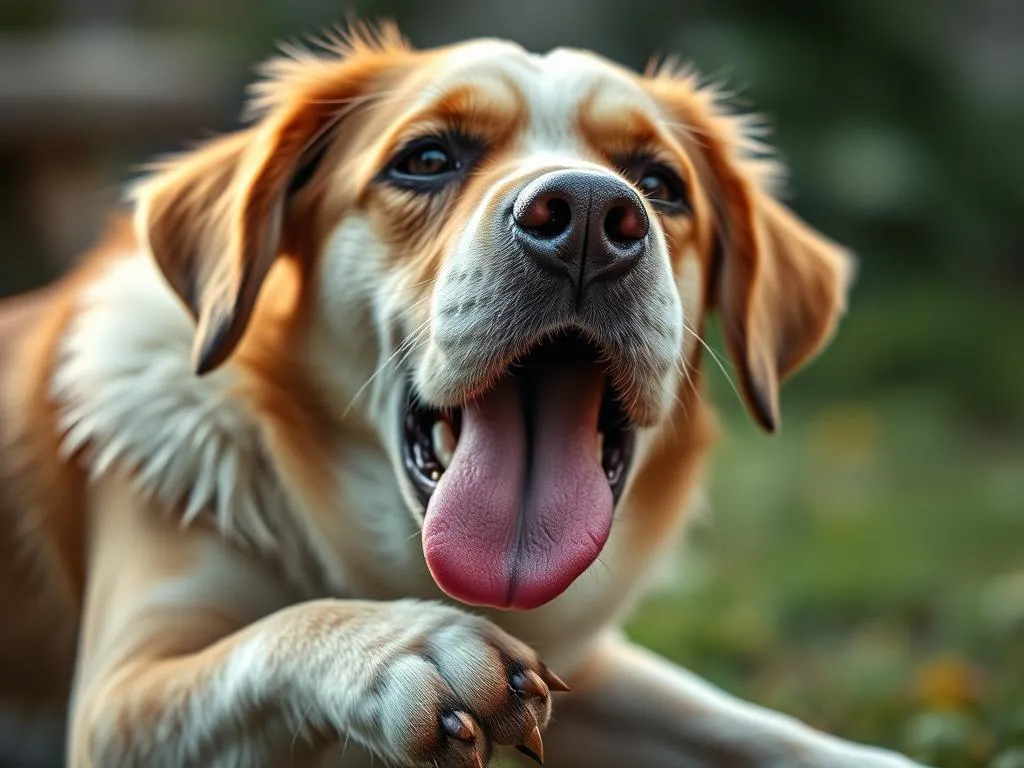
Introduction
Dog behavior can be fascinating and perplexing for pet owners. One of the most common behaviors observed in dogs is licking. While it may seem like an innocent activity, understanding why dogs lick everything is crucial for any dog owner. This behavior can reflect a range of emotions, instincts, and health conditions. In this article, we will delve into the various reasons behind why dogs lick and how it affects their health and behavior.
Understanding Canine Behavior
Licking in dogs is a natural instinct and a multifaceted behavior. It serves as a form of communication and is intrinsic to a dog’s daily life.
Definition of Licking in Dogs
Licking involves a dog using its tongue to touch or taste surfaces, including people, other dogs, and objects. This action can be voluntary or involuntary, depending on the context and the dog’s state of mind.
Overview of Canine Communication and Behavior
Dogs communicate using a variety of methods, including body language, vocalizations, and licking. Licking can indicate affection, submission, or even excitement, making it an essential aspect of how dogs interact with their environment and each other.
The Role of Licking in a Dog’s Daily Life
Licking plays a vital role in a dog’s daily routine. From grooming to social interactions, this behavior is woven into the fabric of a dog’s life, making it important to understand its implications.
Reasons Why Dogs Lick Everything
Licking is a complex behavior influenced by various factors. Here, we explore the primary reasons why dogs lick everything.
Natural Instincts
Licking is a natural behavior for dogs, deeply rooted in their instincts.
- Role of Licking in Puppy Development: In the early stages of life, puppies rely on licking for survival and comfort. Mother dogs lick their puppies to groom them and stimulate their bodily functions. This nurturing behavior fosters a bond between the mother and her pups.
Communication
Dogs use licking as a form of expression.
- How Dogs Use Licking to Communicate: When dogs lick humans or other dogs, it can signify affection or a desire for attention. They may also lick to convey submission, showing that they respect the other party.
Exploration and Curiosity
Dogs are naturally curious creatures, and licking is a way for them to explore their environment.
- Dogs’ Sensory Perception: A dog’s sense of taste and smell is incredibly powerful. By licking various surfaces, dogs gather information about their surroundings, helping them understand the world better.
Stress and Anxiety
Licking can also be a coping mechanism.
-
Connection Between Licking and Stress Relief: Many dogs lick when they are anxious or stressed. This behavior can provide comfort, similar to how some humans might bite their nails or fidget when nervous.
-
Signs of Compulsive Licking: If licking becomes excessive, it can indicate an underlying issue. Compulsive licking may lead to skin irritations or other health problems, so it’s essential to monitor this behavior closely.
Health Considerations
Sometimes, licking may be a sign of a medical issue.
-
Potential Medical Reasons for Excessive Licking: Conditions such as allergies, skin infections, or pain can cause dogs to lick excessively. If you notice that your dog is licking a specific area persistently, it may be worth consulting a veterinarian.
-
When Licking Indicates Pain or Discomfort: Dogs may lick areas that are painful or uncomfortable. If your dog suddenly starts licking more than usual, it’s crucial to pay attention to any other signs of distress.
The Impact of Licking on Dog Health and Behavior
Understanding the impact of licking on dog health and behavior is vital for responsible pet ownership.
Positive Effects
Licking can have several benefits for dogs.
-
Bonding and Social Interaction: Licking can strengthen the bond between a dog and its owner. When a dog licks you, it may be showing affection and love, reinforcing the connection you share.
-
Comfort and Soothing Behaviors: Licking can be self-soothing, helping dogs relax in stressful situations. This behavior can provide comfort during thunderstorms, fireworks, or other anxiety-inducing events.
Negative Effects
However, excessive licking can lead to adverse effects.
-
Potential for Skin Problems and Infections: Continuous licking can cause skin irritation, hot spots, and infections. It’s essential to monitor your dog’s licking habits to prevent these health issues.
-
Behavioral Issues Stemming from Excessive Licking: Licking can become a compulsive behavior, leading to further anxiety and stress. This cycle can be detrimental to a dog’s overall well-being.
Balancing Licking Behaviors
It’s crucial to find a balance in licking behaviors.
- Importance of Moderation in Licking Behaviors: While licking is a natural behavior, moderation is key. Encouraging healthy licking habits can help mitigate the negative effects associated with excessive licking.
Managing Excessive Licking
If your dog’s licking behavior becomes excessive, it’s important to take action.
Identifying Triggers
The first step in managing excessive licking is identifying potential triggers.
- Observing the Environment and Situations Leading to Licking: Pay attention to when and where your dog licks the most. Is it triggered by specific environments, situations, or stressors? Understanding these triggers can help you address the issue effectively.
Training Techniques
Positive reinforcement can be an effective way to manage licking behavior.
-
Positive Reinforcement Methods to Redirect Licking: Whenever your dog starts to lick excessively, redirect its attention to a toy or command. Reward them when they follow your lead, reinforcing positive behaviors.
-
Commands and Distractions to Minimize Licking Behaviors: Teaching your dog commands like “leave it” or “no lick” can help manage licking. Distractions, such as engaging them in a game or providing chew toys, can also be beneficial.
Professional Guidance
In some cases, seeking professional help may be necessary.
-
When to Consult a Veterinarian or Animal Behaviorist: If your dog’s licking behavior becomes compulsive or is accompanied by other symptoms, it’s time to consult a veterinarian or an animal behaviorist. They can help determine the underlying cause and recommend appropriate treatments.
-
Overview of Potential Treatment Options: Treatment may include behavioral therapy, environmental changes, or medication, depending on the cause of the excessive licking.
Conclusion
Understanding why dogs lick everything is essential for any dog owner. This behavior can stem from natural instincts, communication, exploration, stress, or health issues. Recognizing the signs and implications of licking can help you manage your dog’s behavior effectively.
By observing and understanding your pet’s licking habits, you can foster a healthier and happier environment for them. Addressing licking behavior is crucial not only for your dog’s health but also for their overall happiness and well-being.
FAQs
Common Questions About Dog Licking Behaviors
- Why does my dog lick me constantly?
-
Your dog may be showing affection, seeking attention, or trying to communicate.
-
Is licking a sign of anxiety in dogs?
-
Yes, excessive licking can indicate stress or anxiety, especially if it becomes compulsive.
-
How can I stop my dog from licking excessively?
- Identifying triggers, redirecting their attention, and using positive reinforcement can help manage excessive licking.
Clarifications on Myths Surrounding Dog Licking
- Myth: Dogs lick because they are hungry.
-
Fact: While licking can be associated with food, it is often a form of communication or exploration rather than a sign of hunger.
-
Myth: All licking is bad behavior.
- Fact: Licking is a natural behavior, but moderation is key. Excessive licking can be problematic.
Tips for First-Time Dog Owners Regarding Licking Behavior
- Observe your dog’s licking habits and identify patterns.
- Provide plenty of mental and physical stimulation to reduce anxiety-related licking.
- Consult a veterinarian if you notice changes in licking behavior or signs of discomfort.
By understanding the nuances of licking, you can better support your dog’s emotional and physical health, ensuring a happier, healthier life together.









